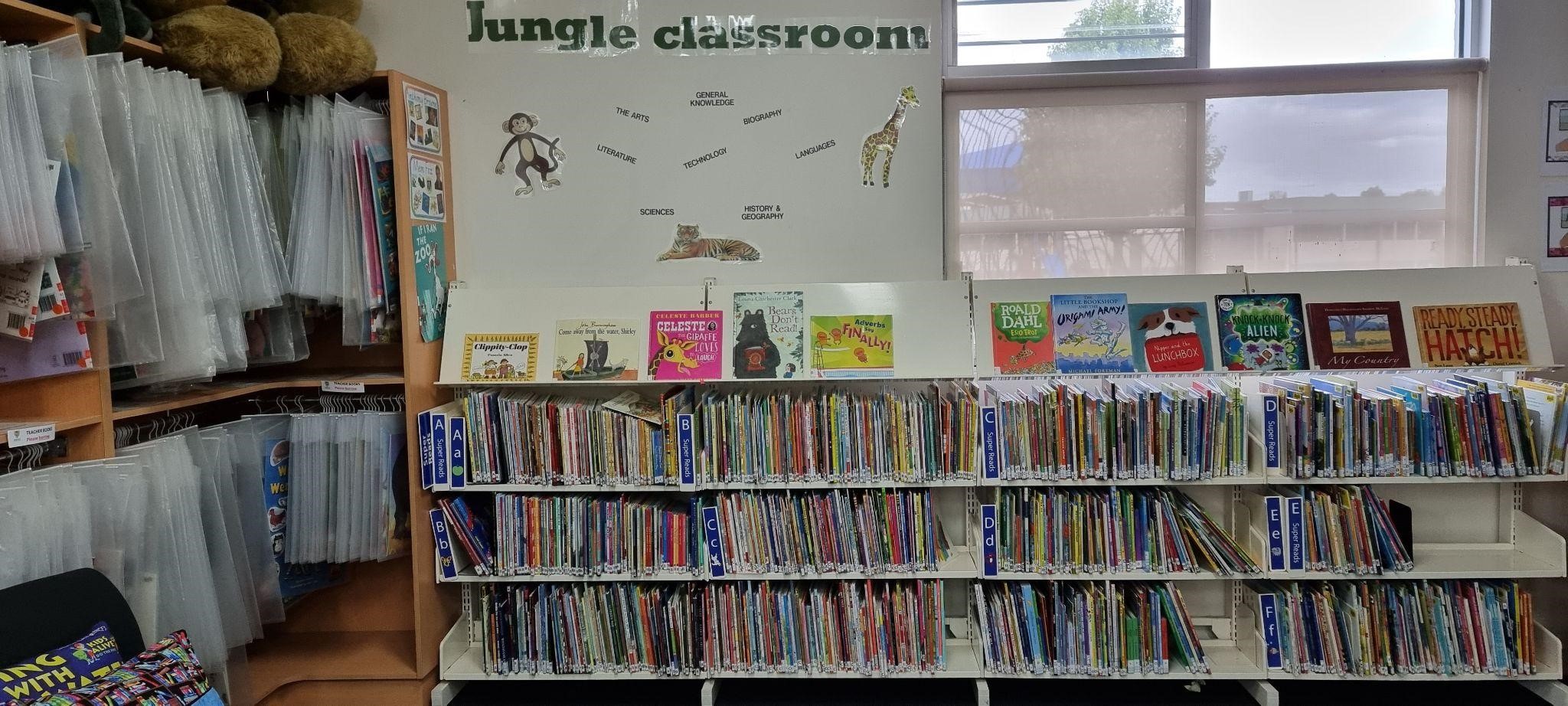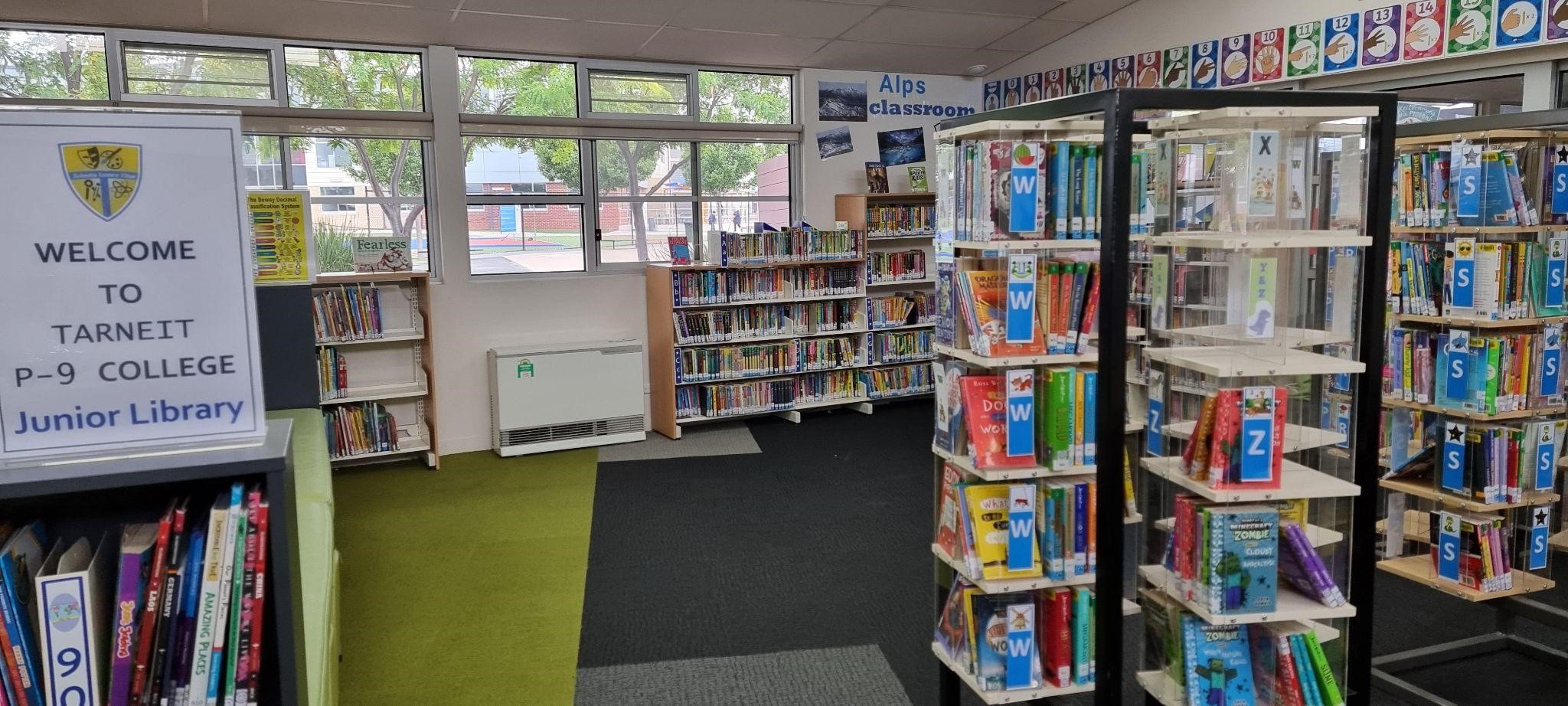Issue 128
Term 1 2024
School Library Spotlight: Tarneit P-9 College
SCIS interviews Susan Grieve about her library's role in fostering literacy and inclusivity in a highly multicultural school.
Job title and role
As the college librarian for a school that caters for Foundation through to year 9 with more than 2,387 students, Susan Grieve manages two libraries within a single campus. She oversees a broad range of resources catering to diverse age groups, from picture storybooks for younger students to advanced materials in the senior collection.
Most rewarding aspects of working in a school library
For Susan, the library’s ability to profoundly impact students’ lives stands out as the most rewarding aspect. ‘It’s about changing lives, one book at a time,’ she says. She recalls instances where students who initially struggled with reading or had little interest in books became avid readers, thanks to the library’s nurturing environment.
She finds great joy in nurturing a love for reading among students, especially those from diverse backgrounds. She shares a story of a student who arrived at the school with minimal English skills and found comfort and growth in the library.
‘Seeing her confidence bloom as her language skills improved was incredibly rewarding,’ Susan recalls.
The library serves as a safe and inclusive space for all students, something she is particularly proud of. She recounts the experience of a neurodiverse student who found a haven in the library. ‘He told me the library was his sanctuary. That’s when I knew the impact we were making,’ she reflects.
Role of the library in the school community
Susan views the library as a central hub for both cultural and academic activities. ‘Our library is more than just books; it’s a vibrant community space where learning, culture and social interaction intersect,’ she explains.
The library, according to Susan, plays a critical role in promoting collaborative learning among students. ‘It’s a place where students come together to work on projects, share ideas and learn from each other,’ she says. This collaborative environment fosters a sense of community and teamwork, integral to the educational experience.
She emphasises the library’s role in catering to the diverse educational needs of the student body. With students from various linguistic, cultural and academic backgrounds, the library provides a range of resources and programs tailored to meet these diverse needs. ‘We’re constantly evolving our collection and services to ensure every student feels included and supported,’ she adds.

Book display at Tarneit P–9 library.
The library also serves as a support system for teachers. Susan collaborates closely with teachers to provide curriculum appropriate resources that complement classroom learning. ‘Our goal is to be an extension of the classroom, providing materials and resources that enhance the curriculum and teaching strategies,’ she states.
Central to the library’s role is promoting literacy and a love for lifelong learning. Susan is passionate about creating programs and initiatives that engage students with reading and learning. ‘Whether it’s through reading competitions, author visits or interactive workshops, we’re always looking for ways to ignite a love for reading and learning in our students,’ she shares.
She actively fosters community engagement and partnerships to enrich the library’s offerings and connect students with broader cultural and educational experiences. She collaborates with local libraries, sharing resources and co-hosting events such as author talks and reading challenges, which extend students’ learning beyond the school environment. Additionally, the library partners with community organisations for cultural events, such as celebrating International Mother Language Day with cultural performances, and educational seminars on topics like internet safety with local experts. These initiatives enrich the library’s resources and foster a sense of social responsibility and cultural awareness among the students.
Challenges and multicultural considerations
One of the most significant challenges Susan’s library faces is catering to a student body where language backgrounds other than English are 83%, with more than 50 different languages represented. ‘Our diversity is our strength, but it also presents unique challenges in ensuring equitable access to resources,’ she explains. The library addresses this by offering books in various languages, as well as bilingual editions. This helps make its resources more accessible to the cultural and linguistic diversity of the student community.
Susan emphasises the importance of cultural sensitivity in building the library’s collection. ‘We need to make sure that our books not only include various languages but also represent the diverse cultures of our students,’ she says. This involves careful selection of materials that reflect the stories, histories and experiences of the school’s multicultural population.
Susan’s library also leverages technology to aid language learning and comprehension. Digital platforms like ‘Wheelers eBooks’ offer translations, enabling students to access literature in their native languages alongside English. Susan stresses the importance of such tools, ‘In a digital age, it’s crucial we provide technological solutions that support our students’ language acquisition and literacy development.’
Another challenge is the transient nature of the student population, with culturally diverse students often moving in and out of the school, sometimes spending extended periods overseas. Maintaining continuity in their reading and learning journey is a challenge we constantly work to address,’ she notes. The library adapts by offering flexible lending policies and digital resources that students can access remotely.
Promoting reading and literacy
Susan highlights the importance of offering a wide range of reading materials to cater to different interests and reading levels. ‘We make sure our shelves are stocked with a variety of genres, from graphic novels to biographies, ensuring there’s something for every student,’ she says. This diversity in the collection encourages students to explore different types of literature and find what resonates with them.
The library works closely with teachers to integrate reading into the broader curriculum. ‘We collaborate with teachers to provide reading lists that complement their lesson plans and organise thematic book displays related to current classroom topics,’ Susan explains. This integration ensures that reading is not seen as a standalone activity but as an integral part
of the educational process.
The library hosts various literacy events throughout the year, such as book fairs, poetry readings and author visits. ‘Having authors come in and discuss their work brings books to life for the students,’ Susan shares. These events provide an interactive platform for students to engage with books and authors, fostering a deeper appreiation for reading.
Recognising the importance of digital literacy, Susan includes digital resources in her literacy promotion strategies. ‘We provide access to e-books and audiobooks, and teach students how to use these digital platforms,’ she states. This approach not only supports traditional reading habits but also prepares students for the digital world.

Tarneit P-9 College Library
To further personalise the reading experience, the library offers customised reading recommendations for students. ‘We take the time to understand each student’s interests and reading level, and suggest books that might appeal to them,’ Susan adds. This tailored approach helps students discover books they are likely to enjoy and engage with reading more deeply.
Encouraging library use
Susan views tailoring the library to the interests and needs of the students as vital to encouraging engagement. ‘We constantly ask for their input on what they want to read and what they want to see in the library. This feedback directly influences our acquisitions,’ she explains. By actively involving students in decision-making, the library becomes a reflection of their preferences, encouraging them to utilise its resources more frequently.
One of Susan’s library’s most effective strategies is the Library Apprenticeship Program. ‘It’s about giving them a sense of ownership and responsibility,’ Susan notes. In this program, students volunteer in the library, performing tasks such as shelving books, managing check-outs and helping in the organisation of library events. This hands-on experience not only fosters a deeper connection with the library but also builds valuable skills among the students.
Favourite aspect of SCIS
Susan appreciates the integration of SCIS with her library management system, noting its simplicity and efficiency in cataloging and managing resources. ‘SCIS is a lifesaver. It syncs perfectly with Oliver, our library management system, saving us so much time,’ she says.
Susan hopes SCIS will offer more advanced, interactive professional learning sessions. She suggests these sessions could provide step-by-step guidance on integrating various educational and library resources, particularly benefiting those less confident with technology.
